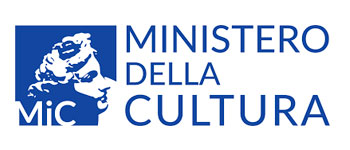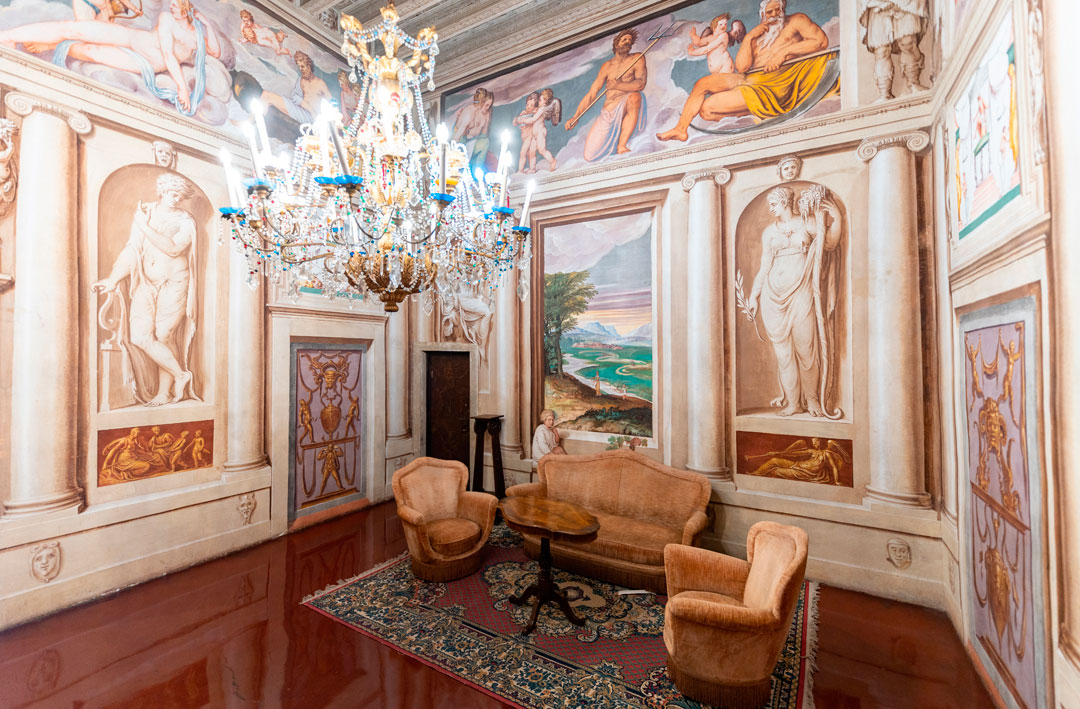
ARCHITECTURE AND FRESCOES
Villa Godi Malinverni - Lugo di Vicenza

Villa Godi Malinverni was the first villa designed by Palladio, constructed between 1540 and 1542. The project's inception, however, dates back a few years earlier, around 1537, when Gerolamo Godi assumed the role of head of the family following the death of his father, Enrico Antonio. Between the late 15th and early 16th centuries, in this land, there was already the first family residence.
The Villa Godi Malinverni site is characterized by sobriety and rigor, with some elements harking back to 15th-century Venetian architecture, from which Palladio would progressively distance himself. The use of architectural ornaments is minimized, making the decorative apparatus of the interiors stand out even more. The arrangement of the rooms follows a harmonious design.
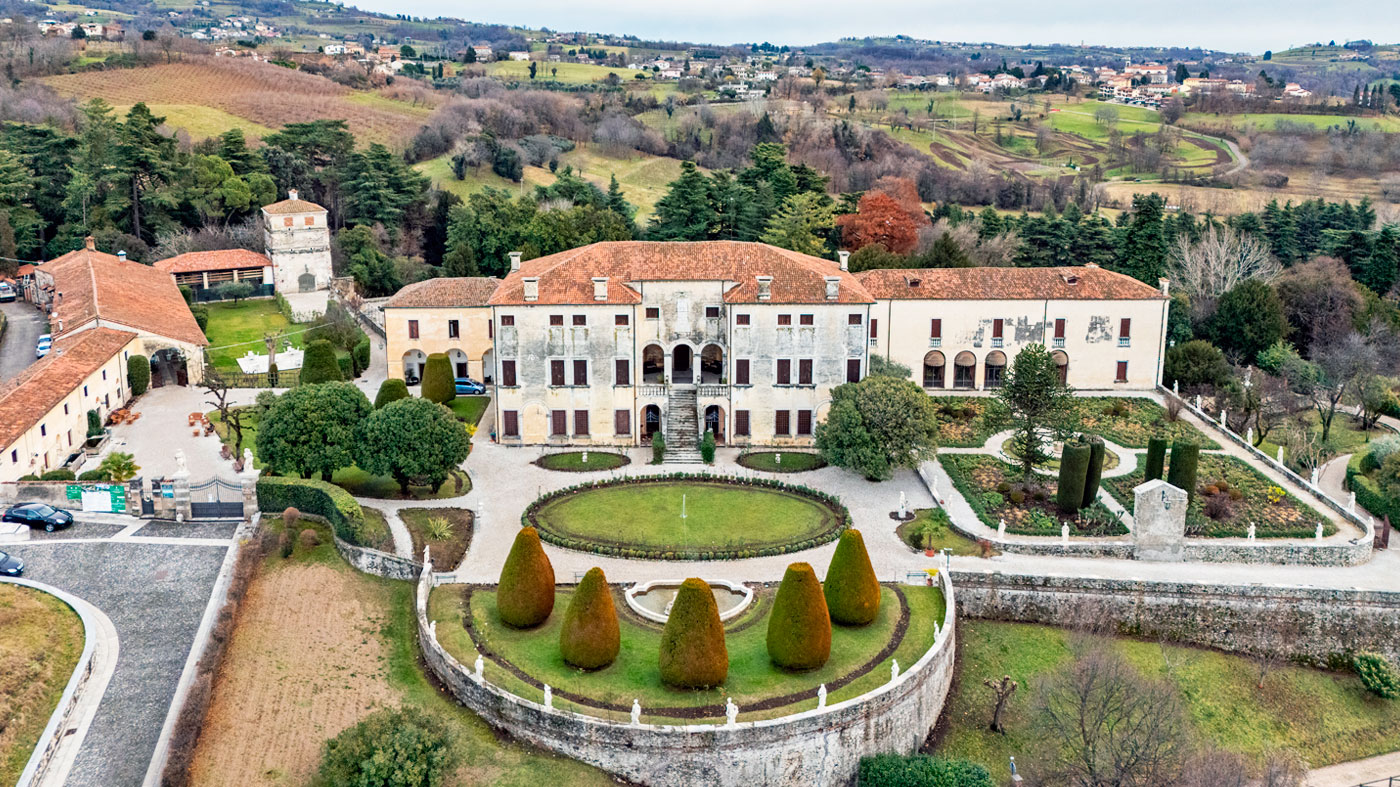
The front of the villa is recessed, flanked by two projecting corner wings with a central staircase, the main access to the noble rooms. The central arch of the loggia restricts access to these spaces, evoking the concept of a medieval drawbridge, symbolizing the need to control access to the private areas of the Godi family. The floor plan of the central section embodies the principle of symmetry, with the creation of a loggia and central hall at the heart of the villa, flanked by two lateral wings, each consisting of four rooms.
Of the two side wings, only the one on the left, with three arches, is part of the original design. The right-wing, longer and opened by five arches with corresponding windows above, was added at the end of the 1570s.
The spaces and values of the Villa are further enhanced, as is often the case, by the gardens, which are varied and meticulously maintained. These gardens are among the rare examples directly designed by Andrea Palladio himself, who also included them in his Quattro Libri along with the villa's design.
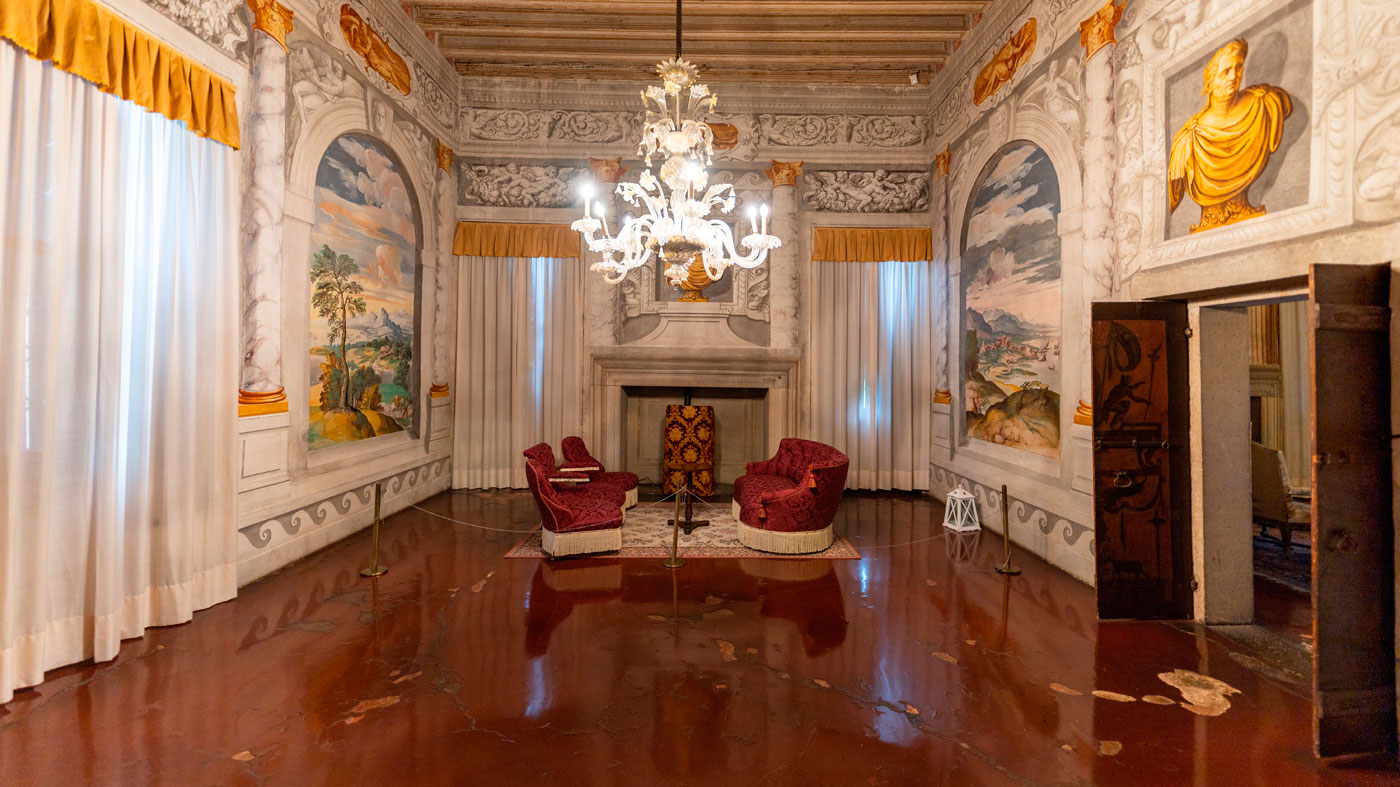
The rooms of Villa Godi Malinverni are richly decorated, creating a stark contrast with the austere external architecture. The frescoes, created by two distinct artistic schools that differ in themes and use of color, were painted almost during the same period.
In the central hall and the left wing (from the facade), the work of the Veronese painters Battista del Moro (1514â1575) and Battista Zelotti (1526â1578), who were part of the classical school, can be admired. The rooms in the right-wing, however, were frescoed by the landscapist Gualtiero Padovano (circa 1510â1552), from the mystical school.
The frescoes at Villa Godi Malinverni are among the most significant examples of Renaissance frescoes in Veneto, where visitors can experience multiple styles and artistic schools in one unique setting.
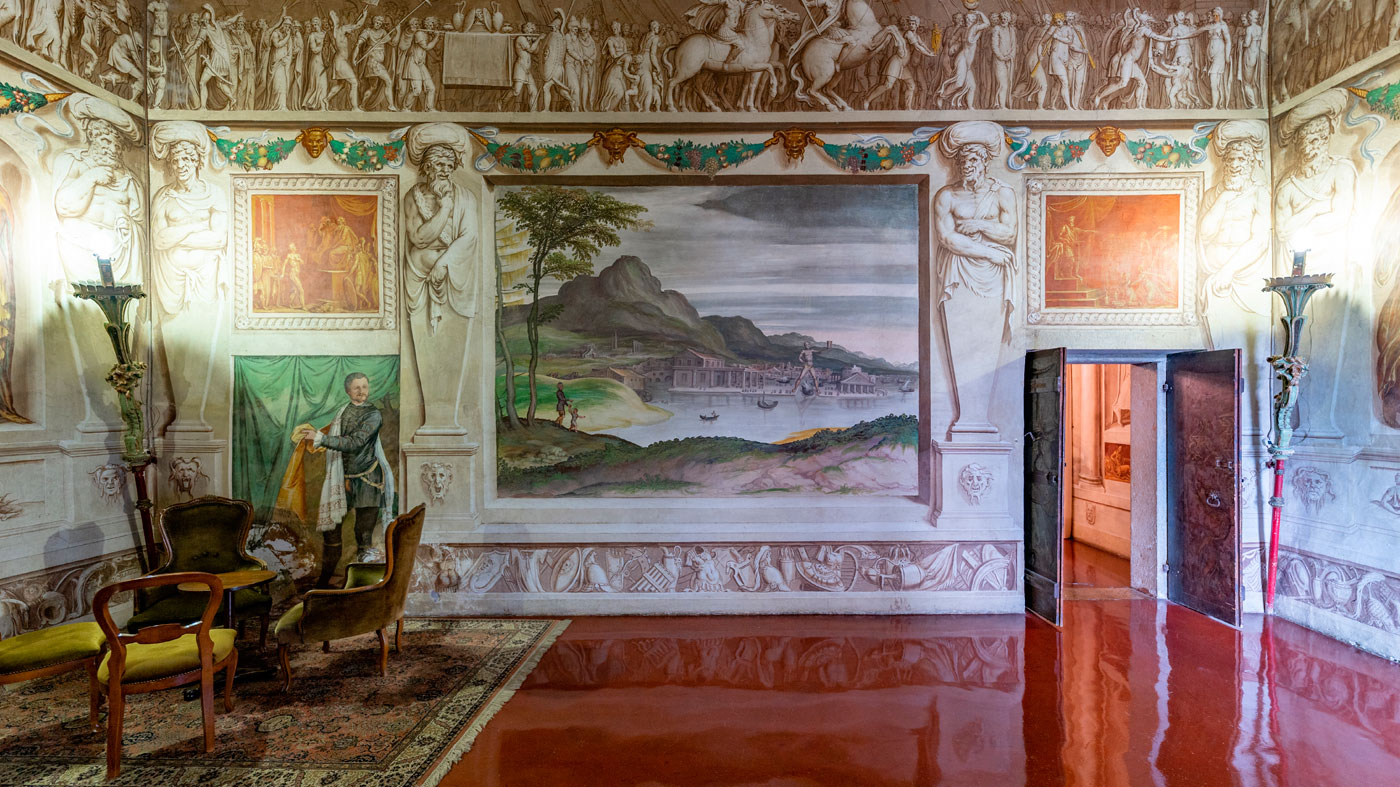
The visit begins by crossing the loggia, frescoed by Gualtiero Padovano, to access the first room on the left. In this part of the villa, the frescoes by del Moro and Zelotti can be seen. The Sala delle Muse, Sala dell'Olimpo, and Sala di Venere are dedicated to mythological themes and classical literature, reflecting the passions of the noble owners, such as music, reading, and love. The colors used are soft tones, including ancient rose, ochre yellow, and sapphire blue.
Next, visitors can immerse themselves in the majestic central hall, entirely frescoed by Zelotti, which depicts scenes from the battles between Alexander the Great and King Darius of Persia, along with elements of encomiastic and mythological subjects such as the abduction of Europa and Ganymede.
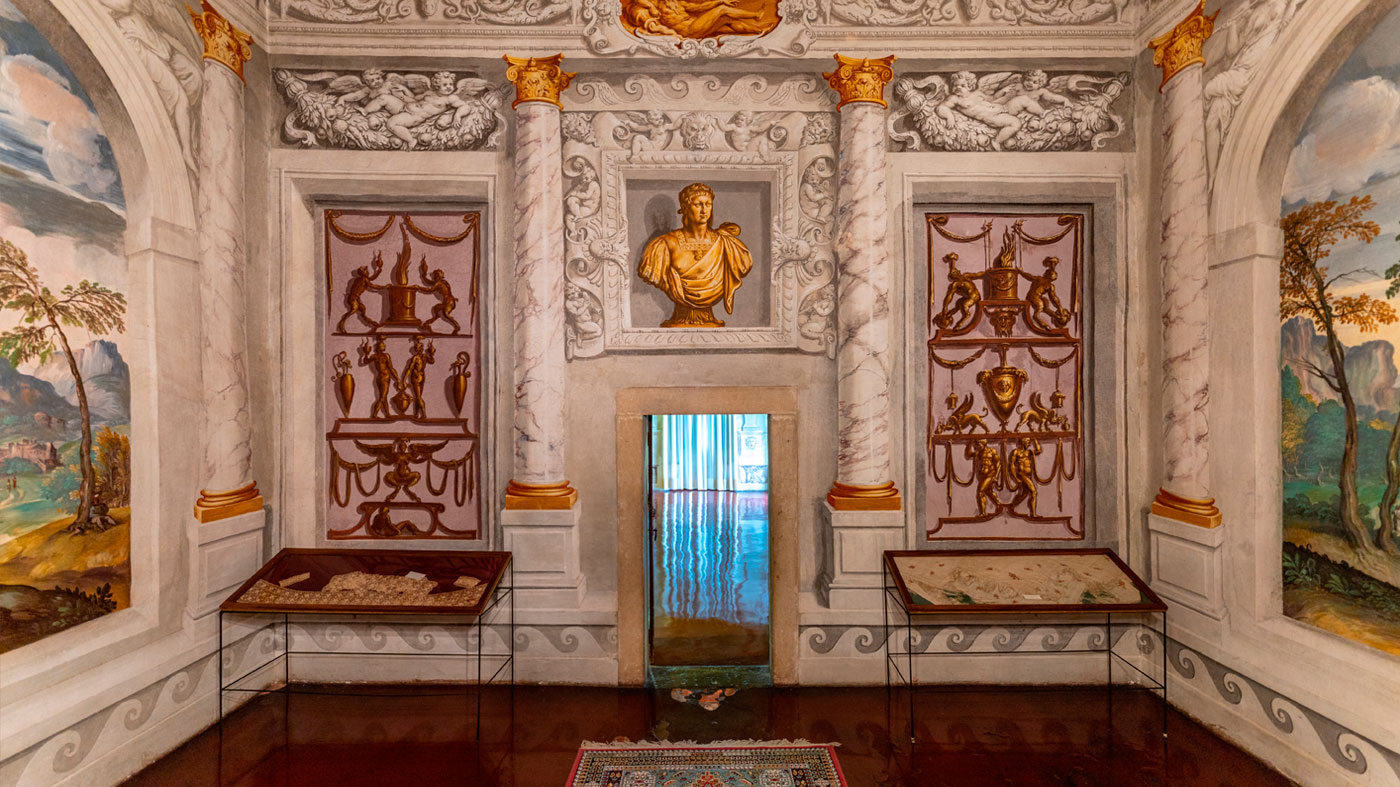
As the visit continues through the remaining rooms, one encounters frescoes from the "mystical" school, painted by Gualtiero Padovano. The Sala del Putto, Sala dei Trionfi, Sala dei Cesari, and Sala dei Sacrifici showcase stronger, more acidic colors and grotesque decorations, reflecting Roman history and traditions with a focus on magnificent landscape paintings. These landscapes are designed to communicate with the villa's exterior, allowing visitors to imagine how the landscape would have appeared during the Renaissance.
In the lower rooms, the spaces dedicated to the servants can be explored, particularly the beautiful "cucinone" (kitchen), one of the best-preserved examples of Renaissance kitchens, featuring a 16th-century fireplace and an 18th-century mechanical rotisserie. Also on the lower floor, visitors can admire the last frescoed room, the Sala delle Stagioni (Room of the Seasons), painted by Zelotti, possibly in collaboration with the Veronese, and notable for preserving its original floor.

